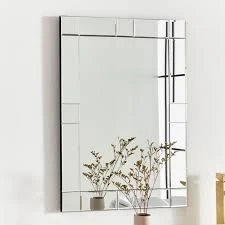

The Allure of Satin Pattern Glass A Unique Blend of Aesthetics and Functionality
Satin pattern glass, with its distinctive texture and translucent quality, has become increasingly popular in both contemporary and traditional design applications. Its unique characteristics not only provide an aesthetic appeal but also serve functional purposes that enhance various environments, from homes to commercial spaces.
At its core, satin pattern glass is a type of glass that has been treated to achieve a soft, matte finish. This finish diffuses light while maintaining privacy, creating an inviting atmosphere that is both bright and serene. Due to this unique characteristic, satin pattern glass is often utilized in settings where light control and privacy are paramount, such as in bathrooms or conference rooms.
One of the most significant advantages of satin pattern glass is its versatility. Available in a range of patterns—ranging from subtle swirls to bold geometric designs—this type of glass can complement virtually any decor style. Whether you’re aiming for a minimalist aesthetic or a more ornate look, satin pattern glass fits seamlessly into the overall design scheme. The interplay between light and surface texture creates visual interest without overwhelming the space, making it a favorite among designers and homeowners alike.
Moreover, the practical benefits of satin pattern glass cannot be overlooked. Its opacity effectively obscures details, ensuring privacy without sacrificing natural light. This quality makes it an excellent choice for window treatments, shower enclosures, and interior partitions. The durability of satin pattern glass adds to its appeal; it is typically resistant to scratching and easy to clean, ensuring that it retains its beauty through everyday use.

In architectural applications, satin pattern glass is increasingly being incorporated into building facades and storefronts, providing an artistic flair while allowing ambient light to filter through. This dual purpose not only enhances the building's aesthetic appeal but also contributes to energy efficiency by reducing reliance on artificial lighting during daytime hours. As architects and builders continue to embrace sustainable practices, materials like satin pattern glass will undoubtedly play a crucial role in the design of environmentally friendly structures.
When it comes to installations, satin pattern glass can be used in a variety of ways. From sliding doors and glass railings to decorative panels and light fixtures, its adaptability makes it an ideal material for both functional and decorative elements. Homeowners can utilize satin pattern glass in creative ways, such as incorporating it into custom cabinetry or using it as backsplash material in kitchens, thereby enhancing both usability and visual appeal.
Additionally, the intimate connection between light and texture offered by satin pattern glass allows spaces to evoke different moods throughout the day. During daylight hours, the glass may cast soft, diffused shadows that create a calming ambiance, while in the evening it reflects warm indoor light, inviting a sense of comfort.
In conclusion, satin pattern glass represents a perfect marriage of elegance, functionality, and adaptability. Its ability to diffuse light while providing privacy makes it an invaluable resource in modern design. As trends continue to evolve, the unique qualities of satin pattern glass will ensure its enduring presence in architectural and interior design, appealing to those who appreciate beauty as much as practicality. Thus, it acts as not just a decorative element but also a key player in enhancing the living experience.